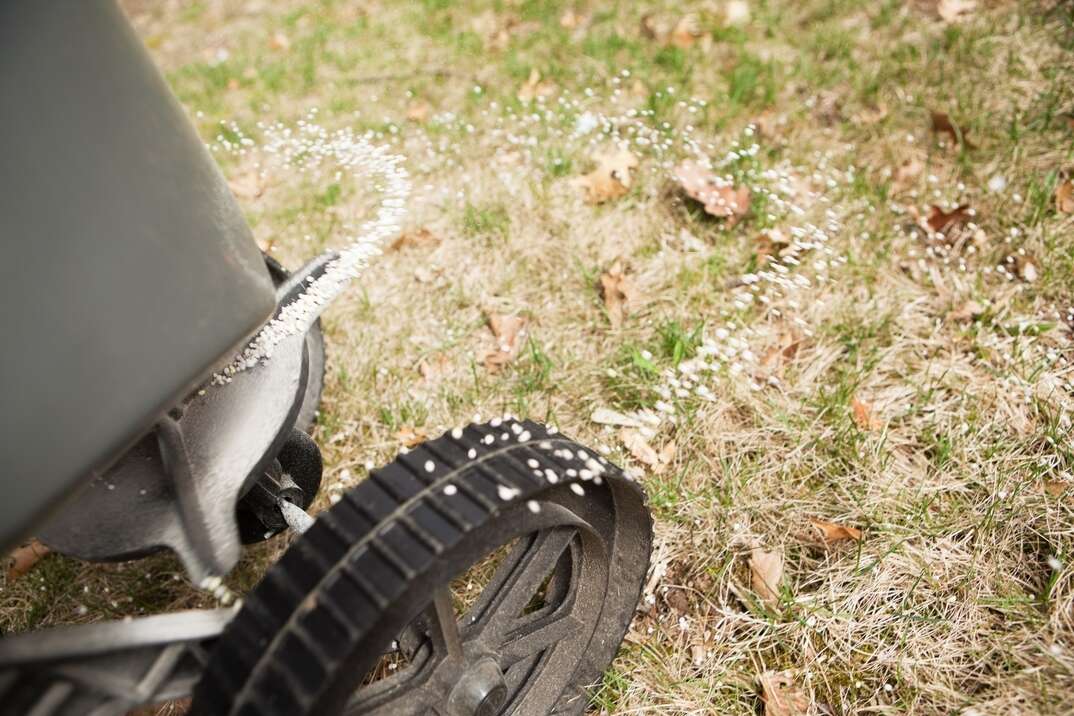How to Fertilize Your Lawn for Fall

The key to a beautiful yard is performing routine maintenance. Once fall arrives, it’s important to fertilize your lawn to keep it looking pristine for the upcoming year. A healthy lawn doesn’t just look good; it also provides benefits to the environment and improves the air quality of the air you breathe.
This May Also Interest You: Rake It or Leave It? Here’s Why You May Just Wanna Leave Your Leaves Where They Fall
There are a few essential details you’ll need to know about: When is the best time to do it, what type of fertilizer you should use and what’s the best way to apply it? We cover all the details in this guide so you’re more than prepared for this project.
When Exactly Should You Fertilize the Lawn?
The best time to fertilize your lawn in the fall will vary depending on where you live. Mid-September through mid-October typically works for most places in the country. Grant Zuercher, owner of Turf Team in Springdale, Ark., says you generally want to make sure you fertilize about 2 to 3 weeks before the ground freezes from the first frost of the season.
The further north you are, the earlier you’ll fertilize. If you plan on putting out a pre-emergent weed killer to fight off cool-season weeds, water your fertilizer to allow it to soak in, then wait a few days before applying the pre-emergent.
What Type of Fertilizer Should You Use?
The type of fertilizer you need also depends on your location, the type of grass you have and the condition of your soil. Zuercher recommends taking a soil test of the yard to figure out the nutrients the soil lacks and thus what nutrients you need to add back into it through fertilizer. This will help guide you on your fertilizer selection.
You can find both at-home and mail-in soil tests. Fall soil tests allow you to better understand what your soil needs during the fall and winter months to help maintain healthy roots, as well as help give you an idea of what your lawn will need in the spring and summer months. Through regular soil tests, you’ll better understand the impact each season has on your lawn and provide insights into how to properly maintain it.
For cool-season grasses like fescue and bluegrass, which actively grow during cooler months, you want to select a fertilizer rich in nitrogen. Nitrogen promotes the growth of healthy, green grass. Look for slow-release nitrogen fertilizer. This aids in even growth throughout the season instead of hitting the soil with nitrogen all at once.
For people who live in the South, Zuercher says warm-season grasses like Bermuda and Zoysia might not need to be fertilized at all in the fall. If they do, you might want a fertilizer that only contains potassium, which can help your lawn remain healthy during the dormant winter months. You don’t want to use nitrogen at this time because you want to avoid lawn growth when your lawn is out of season.
More Related Articles:
- How to Keep Your Lawn Green While Also Conserving Water
- Got Brown Patches and Bald Spots? Here’s How to Fix Lawn Damage
- How Much Does It Cost to Aerate a Lawn?
- What Does It Mean to Aerate Your Lawn and Should You Do It?
- How to Mulch Your Yard
What Do the Formulas Mean?
The fertilizer grade, NPK, is the national standard for measuring nutrients in the fertilizer. NPK stands for nitrogen (N), phosphorus (P) and potassium (K). Zuercher mentions you’ll often see bags of fertilizer with numbers on them, like “10-10-10.” This means that this specific blend of fertilizer has 10% nitrogen, 10% phosphorus and 10% potassium. There are other secondary nutrients in fertilizer, like calcium, magnesium and sulfur, but N, P and K are the big three.
Nitrogen is the most important nutrient for a healthy lawn and helps promote healthy growth and green grass. Nitrogen naturally comes from the air, but your lawn often needs a supplement from fertilizer. Phosphorus also helps promote growth, but it mainly helps with growing strong roots. Potassium helps make your lawn more resilient, withstanding poor conditions like drought and intense cold.
How to Fertilize the Lawn
A few days before you fertilize the lawn, water it thoroughly and allow it to dry. Next, apply the fertilizer using a broadcast spreader. Resist the urge to fertilize by hand because your fertilizer will be spread inconsistently. A lawn tool like a broadcast spreader ensures that the fertilizer is evenly distributed across your lawn.
You should also make sure your broadcast spreader is set to spread fertilizer at the correct rate. The last thing you want is to under-feed the yard and reduce the positive effects of fertilizer. You also don’t want to over-feed your lawn since you can damage it or cause fertilizer run-off, which is bad for the environment. The instructions that come with the specific product will provide exact steps on how to set things up correctly.
The fertilizer you choose will also have instructions on adjusting the broadcaster to ensure the proper amount of fertilizer is being spread across the lawn. After fertilizing the lawn, lightly water the grass to get any fertilizer off the blades and into the soil.


